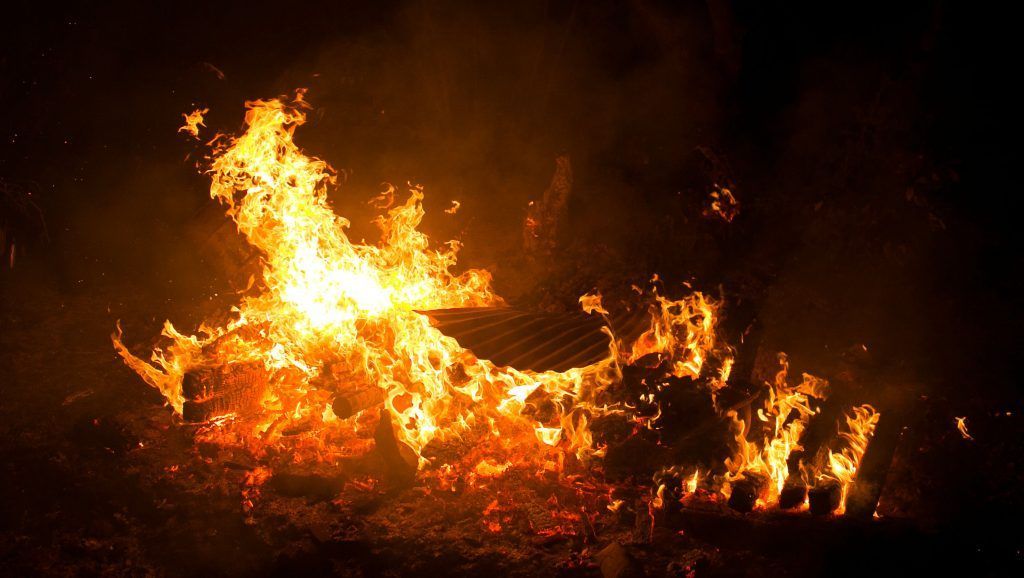Push to promote ‘defensible space’ in homes at fire risk faulted
by Chris Reed | June 17, 2019 8:14 am

After the deadliest and most destructive four-year stretch of wildfires[1] in modern California history, Gov. Gavin Newsom took office in January determined to escalate state efforts to limit fire threats and to adopt safer building and fire maintenance practices. Within days, he promised $305 million in additional funding and tasked the state Department of Forestry and Fire Protection, known as Cal Fire, with identifying the populated areas most at risk and in need of state attention.
Cal Fire responded in March with a 28-page report that identified 35 priority sites. Many were in Northern California in elevated, forested areas. Several were part of the Bay Area, including in Orinda and Woodside. The agency has already begun work on removing flammable brush, building fire breaks to slow the spread of blazes and improving escape routes.
“California needs an all-of-the-above approach,” declared Cal Fire Director Thom Porter.
But Cal Fire officials also told[2] the San Francisco Chronicle that while the additional resources the state was providing were welcome, they still weren’t enough given the fire risks that California faced. Citing the “massive backlog of forest management work,” Cal Fire said a long-term commitment was crucial.
Cal Fire far short of 33 percent home inspection goal
Three months later, a new report has underscored Cal Fire’s warning of the inadequacy of state efforts at a time in which as many as 3 million homes in the Golden State are in areas with elevated fire risks. KQED, the Northern California Public Broadcasting Service news agency, reports[3] that Cal Fire isn’t coming close to meeting its goals of helping homeowners build “defensible spaces” around their structures that limit fire risks. The report found that Cal Fire did far worse in helping homeowners in unincorporated areas at high risk in Northern and Central California than local governments did helping homeowners in Southern California.
Lake County in the state’s Wine Country was devastated by 2018’s Mendocino Complex blaze, which scorched a record 459,000 acres. Lake County officials say 45 percent of its land was burned. But Cal Fire said it was only able to inspect 12 percent of homes last year in Lake, Sonoma and Napa Counties to ensure that flammable brush and other materials were removed. The agency’s goal is 33 percent.
Hundreds of miles to the southeast in the Sierra Nevada region – home to tens of millions of dead and very flammable trees – Cal Fire was able to inspect only 6 percent of homes in 2018.
Cal Fire officials have said with fire season lasting 50 days longer or more than it used to in the Golden State, they have no choice but to prioritize their limited resources by placing fighting active wildfires ahead of fire safety efforts.
But the agency is trying to do more to promote defensible space. It has hired six fire crews this year and plans to add four more by summer 2020 which focus only on reducing flammable vegetation and waste.
Newsom has already declared fire emergency
For his part, Newsom on March 22 took a step that would have seemed bizarre in past decades. Though no serious fires were then reported in California, he declared an ongoing formal state of emergency[4] over wildfire risks.
- wildfires: https://www.fire.ca.gov/communications/downloads/fact_sheets/Top20_Acres.pdf
- told: https://www.sfchronicle.com/california-wildfires/article/California-s-ambitious-plan-to-stop-deadly-13675194.php
- reports: https://www.kqed.org/science/1943058/whos-checking-homes-for-flammable-brush-in-some-high-risk-areas-maybe-no-one
- state of emergency: https://www.gov.ca.gov/2019/03/22/governor-newsom-proclaims-state-of-emergency-on-wildfires-to-protect-states-most-vulnerable-communities/
Source URL: https://calwatchdog.com/2019/06/17/push-to-promote-defensible-space-in-homes-at-fire-risk-faulted/